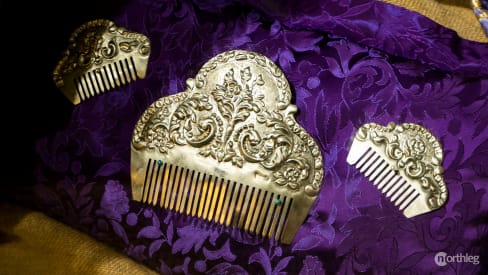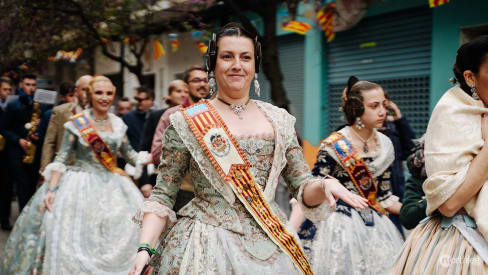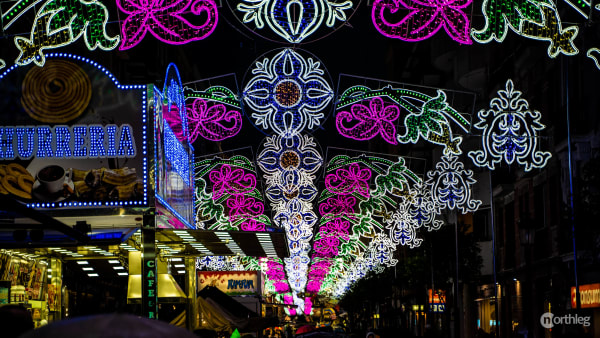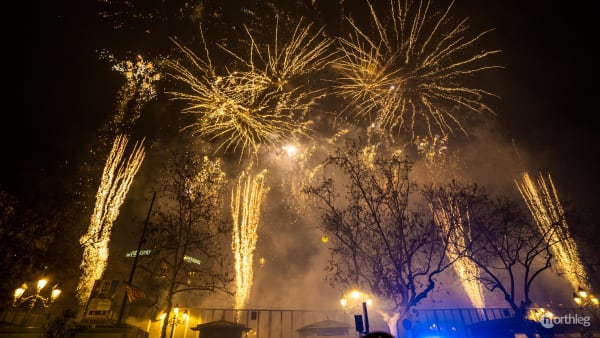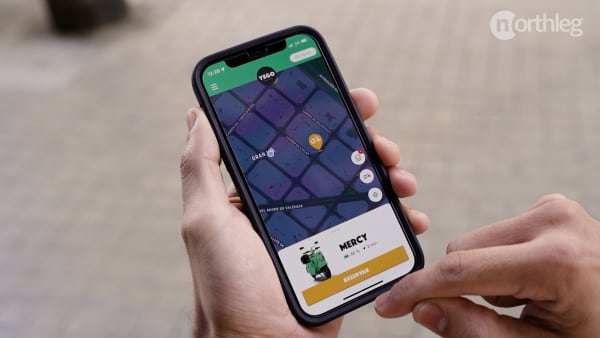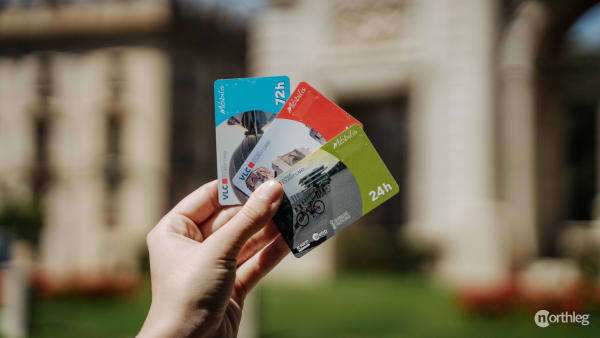Valenciana dress
Valenciana dress
The traje de valenciana (Valenciana dress), sometimes also called a traje de fallera (fallera costume) is the outfit worn by falleras during Fallas and other important events or festivities in the region. Much like men’s clothing, Valenciana dresses are inspired by 18th and 19th-century fashion. However, the women’s outfit is also completed by a specific hairdo and hair accessories, as well as jewellery.
During Fallas, especially during the Semana Fallera (15th-19th March), you’re likely to see women and girls wearing these elaborate outfits in the street. Some of them might even be sporting the hairdo in their regular clothes - which admittedly creates a funny juxtaposition.
These outfits are generally tailor-made for each fallera by a specialised workshop, of which there are quite a few in Valencia. For this reason, these dresses are very expensive. Prices can go from a minimum of €2,000 up to €12,000, with the average dress falling somewhere around €6,000. Of course, some decide to sew the pieces themselves or buy them second-hand. In this case, prices average at €300.
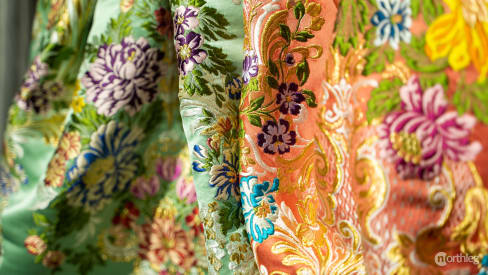
Now, even if some dresses are perfectly matched, they are usually made as two separate pieces for the lower and upper body, with specific undergarments.
Undergarments
- Camisa: This is a shirt, made of linen or cotton, which covers the body from the shoulder to the knees, flaring out towards the bottom. The sleeves are either below or above the elbow. The neckline is usually square and sometimes decorated.
- Enaguas: The petticoat, used to add volume to the lower body. This garment’s lower hem is usually decorated. A faltriquera, a small fabric pouch, can be tied on top of the petticoat, to use as an add-on pocket.
- Crinoline: This metal structure, although not very historically accurate for 18th-century clothing, is sometimes added underneath the petticoat to create more volume and hold out the outer skirt.
Lower body
- Guardapiés: this is the outer skirt, usually made of silk, with elaborate floral or plant-themed patterns. It can be decorated with ribbons or other kinds of embroidery.
- Delantal: this is the apron-like piece that covers the front of the skirt. It is usually made of cotton or silk, and it can be more or less sheer, embroidered or ornamented with lace, sequins, or stitches.
Upper body
The women usually choose between one of two types of bust pieces, both quite structured and form-fitting. They can either match the pattern or contrast with the guardapiés.
- Justillo: This is a sleeveless, corset-like piece. The neckline may be square or round, and the fabric is normally silk. To support the body, the piece is laced and reinforced with metal.
- Jubón: This piece is pretty much the same as the justillo, except that it has long sleeves, either to the wrist, forearm, or elbow. This too can be made of silk or velvet and reinforced with metal wires.
- Pañuelo: This is a small square piece of fabric, folded diagonally, used to cover the shoulders and neckline. The handkerchief can be decorated with lace, sequins, and embroidery, much like the delantal.
Accessories
- Jewellery: The women often wear earrings - many representing grape clusters - and necklaces.
- Footwear: The shoes are normally wide-heeled and can match the fabric of the skirt.
- Hair: The falleras wear specific hairdos, often with a braided bun in the back and occasionally the addition of two side buns. The hair is held in place thanks to the peineta and two rascamonyos.
